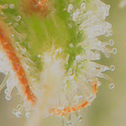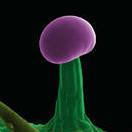Leaderboard
Popular Content
Showing content with the highest reputation on 05/29/2019 in all areas
-
Morning guys, final stretch for the Zkittlez and CBD Crack. These were taken on the 27th. Underfed the GG, only picked up too late that i fucked that one up, so she's not looking too lekker. The CBD Crack ran into a magnesium deficiency right in the end. Seems like the only really happy auto is the Zkittlez. Zkittlez Gorilla Glue CBD Crack5 points
-
By making extracts or oils you can regulate your dosage better and have more if a consistent medicine without testing for the home user . If you made a good extract you know roughly how strong it is . You then can take your extract and use it in edibles or whatever you want to make . It's all about consistancy for your meds , if you though a handful of flowers into coconut oil you will get a different product every time but if you do an extraction and then use the extract you get a lot more of a consistent medication4 points
-
3 points
-
After many many messages in my inbox about how i mix my soils and generally a lot of questions about growing really good organic bud I have decided to do this post. I think even the hydro guys have to agree that when it comes to taste and smell you cant beat organics. The next argument that hydro guys like to use is you will never get growth speed in organics like you would in hydro , i would have to agree with that to a point. While hydro is faster growth in a good organic soil you will keep up very well in growth. I will try to answer all the questions about organics and while most of the writing will be my own i really don't see a point of rewriting things that others have put into words so well , where i use other work i will credit them for there work. I would also like to say that this is the way i like to do things and works for me but with the beauty of organics there is no definitive right or wrong , there are guidelines that MUST be followed but unlike hydro you have a lot of room to play. I will welcome any questions you have or advice you may need , so enough rambling!!! Let's get or organics on!! Soil Food Web: To truly grow organics well you need to have an understanding of the soil food web but more specifically we need to start well at the start of the web because that is what we will be trying to breed and keep happy , the microbes. Unfortunately in a modern age a lot of bacteria and fungi diversity has died of in nature to a degree because of all the crap people put into the soil. This is why i like to collect soil sample from wherever i go , i make a AACT from it and inoculate my compost heap with the bacteria, by doing this you are increasing the bacteria and fungi diversity in your home compost heap and in turn it will help your ladies. The Next part in from Matt and i find his definition excellent Redefining the Soil Food Web for Indoors by Matt Rize The complex relationship between plants and soil is called the soil food web. This describes the connection between roots, soil, and soil organisms. In the past 15 years this topic has been the center of attention for organic gardeners, thanks in large part to Teaming With Microbes by Jeff Lowenfels and Wayne Lewis. Plants produce sugars (carbohydrates) and proteins via photosynthesis, a well known process. Lesser known is that these photosynthetic products are then exuded into the soil, via the root system, to encourage beneficial bacteria and/or fungi. The bacteria and fungi feed larger soil organisms. It is the poop from these larger organisms that feed our plants. This is organic soil gardening at is core. Soil organisms include (from tiny to small): bacteria, fungi, algae, slime molds, protozoa, nematodes, arthropods, gastropods, worms, and insects. These, and many unlisted organisms, are partially responsible for decomposition/aeration of soil. Decomposed soil releases nutrients, which are then used by plant's roots for nutrition. Aeration of soil is a major issue, and has led to many growing with soil-less organic media. Peat/coco/bark, the organic soil-less grow medias, are much more airy than traditional soil. But soil organisms are not the only ones decomposition and improving soil structure. Plants decompose soil chemically by exuding organic acids, ie citric acid, via their roots system. This is how plants actively take nutrition from soil. Plants also alter soil pH to their liking with these same exudates. Plants, like soil organisms, aerate soil via growing and moving root systems. Plants do exert a level of control over the rhizosphere. Taken indoors the root soil food web is different. Indoor container growing is done without the larger soil decomposers, worms and insects. Bagged potting mixes may be void of other crucial soil organisms due to processing and/or sterilization. This means indoor potting soil won't be continuously aerated by worm and insect tunneling. This lack of large decomposers has led to indoor growing being based on mostly lighter (more air) and less nutritionally balanced soil-less organic media instead of actual soil. Familiar examples of soil-less organic media again are: peat, coco, and bark. Soil-less organic potting mixes made from peat/coco/bark need food supplementation, as these mixes do not provide complete plant nutrition, especially in high yield environments. Normally, in the outdoor soil food web, worms help to feed the plants. But indoors we have to do the worm's job, so we add bottled and dry nutrients to our indoor food web. Indoors we use a root-soil-nutrient food web instead of a root-soil food web. The constant addition of vermi-compost (EWC) by worms does not apply indoors, and this plant nutrient source must be replaced for high yield indoor organics. The bottled and dry nutrients replace the worm's decomposition of soil. The switch from soil to soil-less organic (peat, coco, bark), due to soil-less' airy structure, means most of the nutrients that plants use must be added by the gardener. The dry and bottled nutes that we water in are eaten by the bacteria and fungi, which are eaten by nematodes and protozoa, who poop plant food. The root-soil-nutrient food web Do Not Do's: -never feed an organics mix with chemical nutrients -never use water straight out the tap , it contains chlorine and chloramine both of with will decimate your microbes -never mix your organic nutrients in chlorinated water -never let you soil dry out completely , microbes need the moisture - never store your sol in airtight containers , it needs air exchange Organic Additives: biobizz I have been using this for a long time and must say there is no better organic food for our ladies in the country. Unfortunately in SA we are very behind the rest of the world Amino Acids amino acids by HeroHater The basic component of living cells is Proteins. Proteins are formed by a sequence of Amino Acids. Plants synthesise Amino Acids from the Primary elements, the Carbon and Oxygen obtained from air, Hydrogen from water in the medium, which forms Carbon Hydrates by means of photosynthesis and combining it with the Nitrogen which the plants obtain from the soil/nutrient mix, leading to synthesis of amino acids. An important note is Only L-Amino Acids are part of these Proteins and have metabolic activity. Theoretically, the number of possible amino acids in nature is infinite. However, for plant nutrition purposes, the relevant amino acids are L-Alfa types in which the R generic radical is substituted by a Hydrogen one Amino acids are organic substances formed by an asymmetrical carbon atom that is joined to: -An Amine group “NH2 -A Carboxylic group “COOH -Two radicals “R and R´ characteristic of each amino acid About 20 important Amino Acids are involved in the process of each function. Studies have proved that Amino Acids can directly or indirectly influence the physiological activities of the plant. Amino Acids are also supplied to plant by incorporating them into the soil. It helps in improving the micro flora of the soil thereby facilitating the assimilation of nutrients. Foliar Nutrition in the form of Protein Hydrolysate (Known as Amino Acids Liquid) and foliar spray provide ready made building blocks for Protein synthesis. L and D amino acids Stereochemistry is important in living organisms because its properties can change depending on the spatial distribution of its atomic components. All amino acids, with the exception of glycine (which does not have asymmetric carbon), can be found in both L and D forms, in function of the spatial disposition of the groups that join asymmetric carbon. This disposition diverts polarised light in one way or another. This optical characteristic is what divides amino acids into L or D. Only L-amino acids form part of the proteins utilised by plants and promote changes in plant metabolic activity. Total Amino Acids: All amino acids are found as either free form, peptide or protein form: - Free Amino Acids: Free amino acids are individualised in monomer form and not bound to another by peptic unions. Due to their lower molecular weight, plants assimilate this form of amino acids the most quickly and their effects on the metabolic processes of the plant are the most profound. As such, free amino acids are of primary importance in plant nutrition. - Peptides: When two or more amino acids are bound to one another (by peptic union), they form a peptide. The greater the length of the peptide (more amino acids bound together), the more difficult the direct assimilation by plants. - Proteins: The joining of different chains of polypeptides forms a protein. The structural units of proteins are amino acids joined in a sequence and characteristic order of each type of protein. Effects of photosynthesis: Photosynthesis is a plant's most metabolically important pathway. Through it, a plant synthesises sugars from carbon dioxide, water and luminous energy. These sugars (carbohydrates) are the source of energy for a plant's other metabolic processes. A low photosynthetic rate caused by stress can decrease a plant's growth. Glycine and glutamic acid are fundamental metabolites in the formation of vegetable tissue and chlorophyll synthesis. These amino acids raise the concentration of chlorophyll in plants. This increases the absorption of luminous energy, which leads to greater degrees of photosynthesis. Effect on stomata: Stomata are cellular structures that control a plant's hydro balance, as well as the absorption of gases and macro and micro nutrients. A stoma's openings are controlled by external factors (light, moisture, temperature and concentration of salts), and by internal factors (amino acid concentration, abscisic acid, etc.). Stomata close when light and moisture are low, and temperature and salt concentration are high. When stomata close, photosynthesis and transpiration (low macro and micro nutrient absorption) are reduced, and respiration is increased. When this occurs, a plant's metabolic balance is negative. This causes metabolism to decrease and plant growth to stop. L- glutamic acid acts as an osmotic agent for the protective cells cytoplasm, which favors the opening of stomata. Chelating effect: Amino acids have a chelating effect for micronutrients. When jointly applied with micro elements, their absorption and transportation inside the plant simplifies. This is caused by chelation and membrane permeability. L-glycine and L-glutamic acid amino acids are known as very effective chelating agents. Amino acids and phytohormones: Amino acids are the precursors or activators of phytohormones and growth substances. L-Methionine is a precursor of ethylene and other growth factors such as spermine and spermidine, which are synthesised from 5-adenosyl methionine. L-tryptophan is a precursor of auxin synthesis. L-tryptophan is used in plants only in its L-form. L-tryptophan is available only if protein hydrolysis used in its extraction / manufacture is carried out by enzymes. When L-tryptophan is produced using most common industrial processes, this important amino acid is destroyed. Stress Resistance Stress such as High temperature, Low humidity, Frost, Pest attack, Hailstorm, Floods have a negative effect on plant metabolism with a corresponding reduction in crop quality and quantity. The application of Amino Acids before, during and after the stress conditions supplies the plants with Amino Acids which are directly related to stress physiology and thus has a preventing and recovering effect. Pollination and fruit formation: Pollination is the transportation of pollen to the carpel that makes fecundation and fruit formation possible. L-proline helps pollen fertility. L-lysine, L-methionine, and L-glutamic acid are essential amino acids for pollination. These amino acids increase pollen germination and the length of the pollen tube Fulvic Acid: Fulvic, from the word "fulvus" meaning yellow; fulvic acids are light yellow to gold-brown in colour. Hence, the reference to “gold” in brand name products containing fulvic acid. Fulvic acid is considered the miracle of minerals because it not only affects plants it affects us. Before commercial farming depleted nutrients from the soil, fulvic acid was abundant in the foods consumed by humans. The introduction of NPK fertilizers, for the production of super-crops, and the overuse of land has left the soil void of this vital mineral. The natural ingestion of plant-based fulvic acid in the human diet has decreased to a minimal amount. Many natural health care practitioners are recommending fulvic acid to patients as an immune system booster and detoxifier and to help with the absorption of vitamins and minerals from foods. The agricultural benefits of fulvic acids have enormous potential to heal soils of the world and neutralize radioactive and toxic wastes. It also decreases the need for antibiotics in feedlot animals and birds, increasing healthy growth. This miracle molecule, fulvic acid, passes through plants’ cell walls with ease. Fulvic acid acts as a claw or chelating agent, attaching to minerals that would otherwise be rendered useless to plants. Essential nutrients and vitamins, which plants may not be able to assimilate easily, will piggyback on the fulvic acid, to be transported to all cells that need them. This miracle molecule has incredible potential when used for soil enrichment, in hydroponic applications, and as a foliar spray. Fulvic acid is a by-product of humic acid. Humic acid is extracted from any material containing well-decomposed organic matter — soil, coal, composts, etc. As humic material is decomposed by living microbes, these microbes create the most biologically complex organic compounds on earth — fulvic acid. There is perhaps no substance more vital to life than the biologically derived compounds known as fulvic acid. Fulvic acids enter into all living processes within the plant and animal kingdoms. When necessary they act as "free-radical" scavengers, supply vital electrolytes, enhance and transport nutrients, catalyze enzyme reactions, increase assimilation, stimulate metabolism, chelate and change inorganic minerals into organically complex minerals, solubilize, energize, and transport major and trace elements to the site of need, and demonstrate amazing capacity for electrochemical balance. Fulvic acids are involved in indispensable biochemical reactions that influence all biological life forms, both plant and animal. Fulvic acid is a natural mineral that has survived through the many years of evolution on Earth. It is one of the best and most basic minerals to encourage healthy plant growth. It has chemical properties that allow plants to absorb more nutrients, and increases water storage capacity within the plant. Fulvic is so powerful that one fulvic molecule is capable of carrying 60 or more minerals and trace elements into the cells. It also prolongs the time that essential nutrients remain in the plant cells, maximizing nutritional potential. Fulvic acid increases plant metabolism, thus naturally increasing growth. One property of fulvic acid is its ability to assimilate with other minerals in the ground when in a soluble state. It helps turn minerals into a more organic, usable product. When the minerals become more organic they are more readily and easily absorbed by plant roots. On top of this, fulvic acid transmits immunity to all living things. It reacts to everything, including living cells, plants, animals, and even microscopic organisms. Plants treated with a regular diet of fulvic acid have a greater resistance to fluctuations in pH. The fulvic acid acts as a shock absorber because the nitrogen it contains is slowly released. This is extremely important because excess acidity will make minerals insoluble to plants while an alkaline pH will burn the plant. Fulvic acid may be administered via foliar applications. It has a very low molecular weight, which facilitates penetration into plants. Nutrients can be quickly delivered to all sites within the plant, correcting deficiencies and restoring natural balance. To increase the number of internodes or flower sites a plant produces, fulvic acid can be foliar sprayed as soon as the first flower sites appear. Fulvic acid applications will also slow down the vertical growth of plants. The use of fulvic acids in agriculture improves the structure of soil, retaining moisture, encouraging aeration of the root, and providing the plant with nutrients, including nitrogen, phosphorous, potassium, magnesium, and sulfur, as well as micronutrients. It contributes to the conversion of minerals from non-assimilable to soluble form through the release of carbonic gas. The most exciting discovery in glasshouse agriculture in recent years is the application of fulvic acid in hydroponic or soilless cultivation. Agricultural scientists have been aware of the benefits of fulvic acid to soil applications for many years. However, it was only recently discovered that fulvic acid could provide the same benefits to soilless crop production. Adding fulvic acid to the nutrient solution once plants are established, around the second week, strengthens their immunity and increases their resistance to stress. Plants are not as susceptible to slight environmental changes in temperature or humidity. Fulvic acid will not compensate for poor hydroponic cultural practices; however, it does offer a buffer against minor inconsistencies. Nutrient uptake is definitely enhanced when fulvic acid is added to the solution. Plants receive a steady supply of food as they require it. Sediment is reduced or eliminated from the nutrient solution when fulvic acid is added. Fulvic acid discourages binding, which can cause minerals to fall out of suspension, rendering them unusable to plants. The overall increase in plant health and strength is probably the most notable advantage observed from using fulvic acid. Strong plants are more resistant to disease, fungus, mould, and insects, eliminating or diminishing the need for pesticide and fungicide use. More flower sites and stronger stem growth add to the benefits of using fulvic acid in agricultural applications. Healthy plants produce healthy fruit full of vitamins and minerals. Fulvic acid will help ensure that plants meet their highest growth and nutritional potential. Investigations are ongoing into other applications for fulvic acid. This miracle molecule may unleash hidden secrets to overall health and wellness in humans. For now, fulvic acid offers growers the golden opportunity to produce strong, hearty crops abundant in fruit rich in nutrients and minerals. Molasses: The main purpose of this is to feed your microbes , there are a few small effects of the plant but in my grows i feel that the effect is more from the happy microbes than the molasses. Molasses is used as a suspension agent in most organic nutrients. For the last 2 weeks of flower i just water with molasses Humic Acid I feel that in a good organic grow humic acid is not needed as the medium should be producing more than enough of this but if you feel that you would like to try it use half doses Minerals Eggshells N= 1.2 P= 0.4 K= 0.1 Contains calcium plus trace minerals. Dry first, then grind to powder. Limestone (dolomitic) N= 0 P= 0 K= 0 Raises pH, 51% calcium and 40% magnesium. Limestone (calcitic) N= 0 P= 0 K= 0 Raises pH, 65-80% calcium, 3-15% magnesium. Crustacean Shells N= 4.6 P= 3.52 K= 0 Contain large amounts of lime. Should be ground as finely as possible for best results. Wood Ashes N= 0 P= 1.5 K= 7 Very fast acting and highly alkaline (usually used to raise pH). Contains many micronutrients. Crushed Granite N= 0 P= 0 K= 5 Contains 67% silicas and 19 trace minerals. Slow release over a long period of time. Rock Phosphate N= 0 P= 3 K= 0 Contains 11 trace minerals. Slow release over a long period of time. Epsom Salts N= 0 P= 0 K= 0 Provides Mg and acts as a balancer. Manures Rabbit manure N= 2.4 P= 1.4 K= 0.6 Most concentrated of animal manures in fresh form. Cow manure (dairy) N= 0.6 P= 0.2 K= 0.5 Often contains weed seeds, should be hot composted. cow manure N= 0.7 P= 0.3 K= 0.4 Often contains weed seeds, should be hot composted if fresh. Chicken manure N= 1.1 P= 0.8 K= 0.5 Fast acting, breaks down quickest of all manures. Use carefully, may burn. Also, stinks like hell - composting definitely recommended. Horse manure N= 0.7 P= 0.3 K= 0.6 Medium breakdown time. Duck manure N= 0.6 P= 1.4 K= 0.5 Sheep manure N= 0.7 P= 0.3 K= 0.9 Worm castings N= 0.5 P= 0.5 K= 0.3 50% organic material plus 11 trace minerals. Great for seedlings, will not burn. Is a form of compost, so doesn't need composting. Desert Bat Guano N= 8 P= 4 K= 1 Also contains trace elements. Fast-acting, mix in soil or as tea (1 C guano to 5 gal. water). Cave Bat Guano N= 3 P= 10 K= 1 Note: it is recommended to first compost any fresh manure before you use it for 2 reasons: 1. to lessen the chance of harmful pathogens. 2. to break down the manure to make it more usable to the plant (and reduce the smell!) The rates for pig or human manure are not listed because of the high rate of harmful pathogens they contain. Organic Meals Blood Meal N= 11 P= 0 K= 0 Highest N of all organic sources, very fast acting if made into tea. Bone Meal (steamed) N= 1 P= 11 K= 0 Releases nutrients slowly. Caution: European farmers should not use because of the risk of spreading Mad Cow Disease; growers elsewhere may face the same issue. Fish Scrap N= 5 P= 3 K= 3 Use in compost or work in soil several months before using. Usually slightly alkaline. Fish Emulsion N= 4 P= 1 K= 1 Also adds 5% sulfur. Good N source for seedlings, won't burn. Kelp Meal N= 1 P= 0.5 K= 2.5 Provides 60 trace elements, plus growth-promoting hormones and enzymes. Coffee Grounds N= 2 P= 0.3 K= 0.2 Highly acidic, best for use in alkaline soils Dry Dog Food Great fungal starter Lactobacillus-serum http://theunconventionalfarmer.com/recipes/lactobacillus-serum/ Compost Tea- Taken from my blog Compost tea is a liquid made by steeping a porous bag of decomposed and recycled organic matter, known as compost, in water. The compost infuses the water with nutrients and beneficial microorganisms. Eventually, compost tea can be sprayed on foliage to inhibit pests or poured into the ground around plants to enrich the soil and to feed the roots. Depending on its purpose and how it is prepared, a number of different ingredients may go into the tea. Compost tea is a liquid extract of compost that contains plant growth compounds and beneficial microorganisms. Liquid extracts have been used for hundreds of years in agriculture to promote plant and soil health. These extracts have historically been derived from a wide range of plant materials and animal manures, using a variety of processing methods. Aerated Compost Tea is a more recent concept that incorporates aeration technology to create optimum levels of oxygen for growth and reproduction of beneficial aerobic microorganisms. Compost teas are now being produced and used in large-scale agriculture, viticulture, horticulture, nurseries, lawn care, and residential gardens Best Water The chlorine in most drinking water kills the beneficial microbes in compost tea. Oregon University Extension recommends that potable, de-chlorinated water be used to make the tea (see References 1). De-chlorination of tap water is easy: Let a bucket of tap water sit for a few hours before using it to steep or to dilute compost tea. The chlorine will naturally dissipate, leaving the water safe to use. Passive Tea Passive compost tea is simply a "tea bag" suspended in a bucket of water and allowed to soak for several weeks. The compost gradually colors the water as the microbes and nutrients leach into the liquid through the porous fabric bag. The Rodale Institute says a typical water-to-compost ratio for tea is 5-to-1. Nothing should be added to this mix, because added nutrients will cause the tea to turn anaerobic and rancid. The putrefying tea will produce phenols and alcohol that will kill all the beneficial microbes. At that point, the spoiled compost tea becomes worse than useless, as it can harm plants. Aerated Compost Tea Aerated compost tea is "brewed" with the help of pumps that oxygenate the mix, speeding up the extraction of nutrients from the compost. It takes far less time to finish --- usually the tea is ready in as little as 24 hours, according to the Oregon State University Extension Service (see References 1). Supplemental nutrients, such as molasses, kelp, fish byproducts or humic acid, may be added to this brew as catalysts. Once aerated compost tea is ready, it should be applied within four to six hours for maximum potency and benefit . How is it Made?Compost tea is produced by steeping finished compost in water in order to extract beneficial microorganisms and compounds into solution. It uses fine bubble diffusion to supply aeration and mixing of the solution, a supplemental nutrient source (Compost Tea Catalyst) to feed the microorganisms, and a 24-hour brewing cycle to produce a biologically active, Aerated Compost Tea. http://www.youtube.com/watch?v=Jo6f3...eature=related http://www.youtube.com/watch?v=1dEJg...eature=related The right compost is critical!Compost is the source of organic matter and organisms for extraction, so quality is very important! The quality of the tea is only as good as the compost used to make it. Worm castings are often used alone or blended with compost because of their highly diverse microbial composition. Supplemental nutrients (Compost Tea Catalyst) are added at the beginning of the brewing process to the tank to encourage the growth and proliferation of diverse aerobic microorganisms that are beneficial to plant growth. Growing Solutions’ Compost Tea Catalyst™contains kelp, humic acids, rock powder and a blend of botanical ingredients formulated for optimal microbial growth and diversity. Benefits of compost tea Compost tea is a good overall plant health booster. Remember—healthy plants are better able to resist pests and diseases! Compost tea is typically used: • Provide nutrients for foliar or soil application • As a microbial inoculant via soil application to help build soil microbial populations How to use compost tea It is best to plan ahead for maximum benefit from compost tea. Aerated compost tea should be used quickly, since it contains living organisms. Ideally, the tea will be used within 4-6 hours of decanting from the brewer. Keeping it cool, out of the sunlight and in an open-top container, can prolong the useful life of the tea. Periodic stirring or continued aeration will prolong its life even longer. Eventually, however, the organisms in the compost tea will consume all of the food and air available to them, causing their populations to rapidly decline. Any tea that is left over or “expired” can be added to the compost pile or to the soil. Compost tea can be applied to the soil or directly to the plant as a foliar spray. When it is used as a foliar application, it is best to strive for thorough leaf coverage using a fine mist. Foliar applications are best done early morning or pre-dusk to minimize the effects of UV rays. When used as a soil drench, compost tea should be applied so that it moves into the root zone. This can be accomplished by following the tea application with additional water. Use full strength or dilute1:1 (tea to water) for indoor houseplant and garden plants. Drenching a medium size plant requires about 2 cups of tea plus enough water to get the solution down to the roots. Compost tea can be diluted (up to 1:3 tea to water) to cover a larger area like a lawn. When applying to lawns, apply the tea either just before or just after watering. Apply once or twice a month throughout the growing season. While it can contain some nutrients and micronutrients, compost tea should not be thought of as a fertilizer. A healthy, biologically diverse soil promotes more efficient nutrient cycling, which can eventually reduce the amount of fertilizer nutrients required. Compost tea should not be viewed as a fungicide or pesticide either. Research has not shown that compost teas can prevent foliar diseases through foliar sprays in a consistent fashion. Compost tea is more accurately described as a soil or foliar inoculant to be used in combination with other good organic gardening practices and inputs. How to make a compost tea brewer for under R150 http://www.youtube.com/watch?v=vjGZL...eature=related Caution: Use only chemical-free equipment for compost tea storage or applications, e.g. watering cans or sprayers, because residues of fungicides or herbicides are harmful to the compost tea organisms. Similarly, if you are diluting your compost tea before using it, it is best to use water that has been de-chlorinated to maintain the microbial life. Simply storing water in open containers for several hours before diluting the tea will work, as the chlorine will naturally dissipate. Liquid Organic Extracts vs. Compost Teas Building on the concept of compost teas as a liquid organic extract, what are some other common organic extracts used as a liquid drench or foliar spray? Herbal Tea Plant-based extracts—stinging nettle, horse tail, comfrey, clover. A common method is to stuff a barrel about three-quarters full of fresh green plant material, then top off the barrel with tepid water. The tea is allowed to ferment at ambient temperatures for 3 to 10 days. The finished product is strained, then diluted in portions of 1:10 or 1:5 and used as a foliar spray or soil drench. Herbal teas provide a supply of soluble nutrients as well as bioactive plant compounds. Liquid Manures Mixtures of plant and animal byproducts steeped as an extract—stinging nettle, comfrey, seaweed, fish wastes, fish meal. Liquid manures are a blend of marine products (local fish wastes, seaweed extract, kelp meal) and locally harvested herbs, soaked and fermented at ambient temperatures for 3 to 10 days. Liquid manures are prepared similarly to herbal tea—the material is fully immersed in the barrel during the fermenting period, then strained and diluted and used as a foliar spray or soil drench. Liquid manures supply soluble nutrients and bioactive compounds. Manure Tea Manure tea, often referred to as compost tea, uses the waste products of an herbivore, or a plant-eating animal, to make liquid fertilizer. Cow, chicken, horse or rabbit manure becomes the basis for the brew. The manure is left to "age" for several months, because fresh manure is too strong to put directly on plants. The ideal aging method composts the manure by adding it to a compost bin or creating a manure compost bin. Composted or aged manure is steeped like passive compost tea. Manure compost tea should never be made with the waste of a carnivore or an omnivore, because that organic matter may contain pathogens that would contaminate food grown using the tea. Summary Compost teas and herbal teas are tools that can be made on the farm to enhance crop fertility and to inoculate the phyllosphere and rhizosphere with soluble nutrients, beneficial microbes, and the beneficial metabolites of microbes. Caution Whereas raw animal manures are used as a compost windrow feedstock, the composting process—thermophyllic heating to 135-160° F for 10-15 days—assures pathogen reduction. The raw organic matter initially present in the compost windrow undergoes a complete transformation, with humus as an end product. Any pathogens associated with raw manures will be gone. So caution is extended: Manure teas are NOT the same thing as compost teas or compost extracts. Because of concerns over new pathogenic strains of E. coli, the author advises growers to reconsider manure teas and/or to work with a microbial lab to ensure a safe, worthwhile product. Trough Method Large-scale production of compost teas employs homemade tanks and pumps. An 8- or 12-inch-diameter PVC pipe is cut in half, drilled full of holes, and lined with burlap. Compost is placed in this makeshift trough. The PVC trough is supported above the tank, several feet in the air. The tank is filled with water, and microbial food sources are added as an amendment. A sump pump sucks the solution from the bottom of the tank and distributes the solution to a trickle line running horizontally along the top of the PVC trough filled with compost. As the solution runs through the burlap bags containing the compost, a leachate is created which then drops several feet through the air back into the open tank below. A sump pump in the bottom of the tank collects this "tea" and distributes it back through the water line at the top of the trough, and so on. Through this process, which lasts about seven days, the compost tea is recirculated, bubbled, and aerated. The purpose of the microbial food source is to grow a large population of beneficial microorganisms. Commercial Tea Brewers Commercial equipment is available for the production of brewed compost teas (see a list of suppliers below). Usually there is a compost sack or a compost leachate basket with drainage holes, either of which are used to hold a certain volume of compost. The compost-filled container is placed in a specially designed tank filled with chlorine-free water. Microbial food sources are added to the solution. A pump supplies oxygen to a specially-designed aeration device which bubbles and aerates the compost tea brewing in the tank. BIM For this secton full credit goes to Gil and Patrick from http://theunconventionalfarmer.com/ if you want to grow good organics study there site it is good info from one side to the other. For purposes of this thread i will just extract the section on BIM since i use it in all my soil mixes which we will get to still. Beneficial Indigenous Microorganisms(BIM) is a fermented microbial solution that can be used for many applications around the farm. It is loaded with microbes, and is a cornerstone of Gil’s Natural Farming method. It’s an incredible tool with a myriad of applications, some of which are discussed below. How to Make: The idea here is to collect microbes from natural healthy ecosystems. Different areas have different types of microbes in the soil – for example an old growth forest will have microbes that grasslands don’t and vice versa. To get the greatest diversity of microbes, you want to collect them from as many different habitats as you can. For starters, at least get from forest, grassland, and the boundary area between them. TIP: Plant-specific microbes! If you are growing vegetables, find areas where natural veggies are thriving. If planting ornamentals, look for areas where wild ornamental type plants are. Also, target nitrogen-fixer plants since they have rhizobium bacterial strains present – legumes, as well as some other plant genuses such as Alder or Bayberry fall into this category. Here’s how to collect microbes and make BIM: Cook a carbohydrate source to use as the attractant. Rice, barley, wheat, oats, etc should work no problem, most often rice is used here in Asia. Get a wooden box or perforated plastic box and fill bottom with rice. The rice should not be too deep, around 1 inch usually, otherwise it will take too long for all the rice to become infected. Don’t pack the rice, leave it loose to allow airflow. The whole idea is to create more space for the microbes to infect – the surface area of the rice. Mark side of box with date and intended location. Cover box with something that’s breathable – nylons stretched over, or newspaper, just something to keep big critters out – secure with string around top of box. Dig a little depression in the desired location, a place with undisturbed soil where a healthy population of native microbes is likely to flourish. TIP: In forest, look for areas where leaves build up and mold. In grassland, look for areas where grass is most thriving. Place the box in the depression and loosely cover with the dirt and leaves around it. After 5-10 days (depending on temperature), the first colony of microbes you will notice are white molds. Then different colors like yellow, green, black, etc if you leave it much longer. Generally we harvest when it is in the white mold stage. Disregard rice if black molds have formed on it, this is generally a sign of non-beneficial microbes. In nature when there is plenty of food the beneficial microbes dominate. When there is less food, the opportunistic, non-beneficial microbes tend to dominate. At this time, remove container from habitat and transfer rice to a plastic container/jar, and mix with sugar Mix 1:1 with sugar. E.g. 1kg cooked rice with 1kg sugar/molasses(molasses is great and cheap) Mash up the mixture with gloved fingers until it’s mashed but don’t overmix or you’ll destroy all the mycelia Cover this mixture for 3-7 days. When it is quite liquid, add 3 parts water. TIP: 1kg=1L, so if you start with 1kg cooked rice, you’ll add 1kg sugar and then 6L water to that Leave this diluted mixture for 7 days. Cover the top with something air permeable just so animals don’t get to it – cheese cloth, nylons, newspaper, etc You should end up with a mud-like juice. Strain the liquid out of the mixture into a glass jar but don’t seal the top – let it breathe until bubbles in the bottom stop forming. After you stop seeing bubbles forming in the jar, seal it up Now you have your microbial inoculant for that ecosystem Repeat the above steps for each area you are collecting microbes from. The more ecosystems you collect from, the better! To make the final BIM product, combine all your microbial extracts. To increase efficacy, combine this concoction 1:1 with lacto serum. Lacto is the workhorse and is good to have in combination with other microbes. Now you have created your BIM inoculant! How to Use: This is a powerful tool in the natural farming arsenal, with a myriad of applications! It’s a microbial inoculant, so it can be used wherever you are trying to increase/establish populations of microbes – the most basic level of a healthy ecosystem! Add 1-2tsp per gallon of water. Plants Apply as a foliar spray or soil drench. Greatly enhances growth and health of plants by establishing a healthy population of microbes in the soil and on leaf surfaces. Check out the benefits: Transports food to roots Builds a healthy ecosystem from the ground up. This is an invaluable job and the greatest benefit of this serum. Aids disease resistance – fights pathogens, occupies spaces that could otherwise go to harmful bacteria/molds. Aid composting – massively enhances compost – there will be a whole separate post on this concept Aid organic fertilizer. Add to your nutrient solution, microbes break down organic nutrients into bio-available forms that plants can utilize directly. Another key feature Animals This can be used the same way as lacto, but it is a more diversified solution. Boost growth by enhancing digestion Inoculate farmyard (spray ground) where animals occupy to maintain healthy microbial system. Aids disease resistance. Fight the bad bacteria! In aquaculture Add 1L BIM per 700m3 of water containing fish(pond, lake, aquaculture tank, etc). Lacto works in this application also, though not quite as well as BIM(less diversity). Example: You have a pond that averages 20m wide by 30m long by 2m deep. So, 20 x 30 x 2 = 1200m3. In this case you would add roughly 2L of BIM or Lacto (you can dilute the 2L in a larger amount of non-chlorine water if you want more even application). No need for exact measurements, more or less won't affect it (to a point obv) Benefits are built by the microbes: Microbes digest fish wastes, cleaning up water and improving water quality. Allows fish to grow larger due to digestive efficiency Allows higher population of fish in the same amount of water! Literally, increases the carrying capacity of your body of water! This is awesome for aquaculture setups Soils and Soil Mixes Soil is the lifeblood of any grow , if your soil is healthy there is no possible way to not have a happy and healthy lady. Soil like life can not thrive without healthy bacteria and fungi levels. Potting soil is a critical element in all the mixes so you can't just go to builders and buy soil... you going to have to look around and find a good supplier of potting soil. I find the smaller nurseries tend to have better potting soil stocks. Nest you will need to sieve all your potting soil as all potting soil i have some across have a large amount of large items like bark and wood which i don't like in my mixes. Those large items would only be good for plants that will live in there pots for years , we on the other hand need things that can be processed within a few months. Now that we have a better understanding of the soil food we b and additives we can start putting mixes together. The first 2 mixes are some of my old mixes of my blog , i have changed many times since then but i still feel they are good mixes. After the first 2 mixes are some updated ones i have been working on Reaf's Organic Promix: (250L)(original mix) 100L Coco Peat 30L Worm compost 20L Mushroom compost 30L Growlite Perlite 60L Living Soil 1kg Bone Meal 1Kg Talborne 500g volcanic Rock Dust Reaf's living Soil Mix ( original mix) 60L Soil 40L Worm Compost 20L Mushroom Compost 500g Bone meal 500g Talborne 1Kg Dry dog food 500g kelp 500g lime 500g Volcanic Rock Dust 3 tbl compost starter This mix needs to cook for 2 months minimum. ideally you also need to water this mix with molasses and AACT. You will need to turn the soil every few weeks. The work will be worth it , you will end up with a wonderful rich soil. Outdoor Mix: (2 month cook) 7 Parts Soil 3 Parts EWC 1 Part horse manure 1 Part Mushroom Compost 1 Part Cow Manure 1 Part Coarse Coir bone meal lime BIM Lacto Dry Dog Food kelp Seedling Mix Light ( 2 week Cook) 2 Parts Soil 1 Part EWC 2 Parts Palm Peat 2 Parts Perlite BIM After about 3 weeks you will need to start feeding this mix Seedling Plug Method 2 mixes are needed for this method 1 Part Coir 1 Part Perlite and 2 Parts Soil 1 Part EWC 2 Parts Palm Peat 2 Parts Perlite 1 Part Super Soil BIM Fill the bottom half of the pot with the super soil mix and the top half with the neutral mix. Plant in the neutral mix ad when the seedling is ready it will spread to the super soil mix Light Mix Quick ( 2 Week cook ) 3 Parts Potting Soil 3 Parts EWC 2 Part Course Coir 2 Part Fine Coir 2 Parts Perlite 20ml Talborne per 5L lime BIM Lacto This is a light mix but will not need to be cooked for long but will need to be fed Light Mix ( 2 month cook) 5 Part Potting Soil 2 Parts EWC 1 Part Manure 1 Part Chicken Compost 1 Part Compost Lime BIM Lacto Rock dust Bone meal Dry Dog Food Bokashi bran Light feeding will be needed Rich Mix( 2 month cook) 7 Parts Potting soil 3 Parts EWC 1 Part Manure 1 Part Chicken Compost 1 Part Compost 1 Mushroom Compost 2 Parts Super Soil 3 Parts 50/50 Coir 3 Parts Fine Coir 4 Parts Perlite Lime BIM Lacto Rock Dust Rock Phosphate Dry Dog Food Blood Meal Bone Meal Bokashi Bran Amino Acids Fulvic Acid Kelp Meal Mycorrhizae This mix needs to cook for as long as possible and watering with aact made from fulvic and amino acids Super Soil ( 3 month cook) 4 Parts Black Potting Soil 4 Parts Red Potting Soil 1 Part Green Sand 1 Part Leaves/grass clippings 6 Parts EWC 2 Part Manure 1 Part Chicken Compost 1 Part Compost 1 Mushroom Compost Lime BIM Lacto Rock Dust Rock Phosphate Dry Dog Food Blood Meal Bone Meal Bokashi Bran Kelp Meal Watered With aact containing fulvic and humic acids I think i have covered most of the aspects of organic growing and i am happy to answer any questions. I must appologize as i did this in a word document and it did nt copy paste across properly with all the font and things ..... hope it still makes sense Cheers Reaf1 point
-
1 point
-
Wait until the plant shows you need nutrients, that soil is packed with slow release fert, the plant has a few weeks worth of nutrients. So I'd wait until things present themselves.1 point
-
I thought the same thing, but those seedlings look surprisingly healthy. Sent from my CLT-L29 using Tapatalk1 point
-
Get rid of those bark chips, they're going to cause you a lot of pain. I really don't want to be the one to tell you this, but planting into that compost is going be extremely hot for the seedling, you may find that it could potentially die.1 point
-
1 point
-
Think of it like feeding the soil by adding the lower pH feed in. So make up a batch lets say you usually use 5L, make up 10L then go in, feed the 5L. Give it an hour and go in and feed the other 5L again. Make sure the pH is correct before the second feed. This is like a feed flush where you changing the soil pH and retaining the microbes. Sent from my G3312 using Tapatalk1 point
-
Big fan of hydro, which is where I used A LOT of lemon juice (pH down was not something I could buy over the counter, small town) . Remember first grow, figured I could start at 1200ppm liquid, wow was I wrong. PH would literally go out of range within 4 - 5 hours. Live and learn :) Sent from my CLT-L29 using Tapatalk1 point
-
I have a vaporizer for dry weed, a bong in the cupboard, some shortbread biscuits made with cannabutter but always go back to rolling a small little joint...1 point
-
The amount of of lemon juice I've poured into my grows over the years.... Best organic alternative to pH down. In emergencies, vinegar can also work... Sent from my CLT-L29 using Tapatalk1 point
-
Organic for soil go with Lemon Juice for pH Down and Bicarb Soda (blue box) for pH Up. Both can be bought at Checkers, PnP, Spar. I use FF soil and go in at 5.3-5.8 Sent from my G3312 using Tapatalk1 point
-
1 point
-
Gotta keep busy busy busy. Already got the jiffy pellets and powder ready for the girls. Only bought 50 pellets so going to have to pick and choose for clones from all the strains. Unfortunately I'm not taking part in the growoff but my friend Justin Hemp is going to if I'm not mistaken Sent from my G3312 using Tapatalk1 point
-
1 point
-
1 point
-
I actually didn't look into other grows apart from my mates. I guess i got lucky yeah. Sooooo, i messed up by just mixing a big batch of feed and split it 3 ways. Problem is, the GG is a heavy feeder and by the time i noticed the leaves going light, it was already in flower. So not much i could do. I'm using Biobizz hey.1 point
-
Pretty baked, pretty pissed at the PM so I sent it with like two spoons in 2L, apparently they're only okay with one spoon and not two as per evidence of the veg girls. I'm not too worried but we all still make mistakes[emoji28] Sent from my G3312 using Tapatalk1 point
-
1 point
-
Very nice! I did a quick search for Fastbuds yesterday and seems not everyone is very happy with them, lots of people had various issues. Glad your grow turned out pretty well though! How did you mess up the feeding and what nutrients are you using? I got some autoflower seeds I plan on growing too.1 point
-
Looks amazing bru, nice fat colas you have going on there for sure Sent from my G3312 using Tapatalk1 point
-
Also use the Hortimix, got minor brown spots but all in all my girls seem to like it. I tend to use 10-20% less than what the instructions say and keep a close eye on the leaves. Also i have noticed that I never have to adjust the PH.1 point
-
1 point
-
I'm glad your autos turned out the way they did. Me fast buds is a disaster. But anyway so we learn. Clap,clap,clap Sent from my VTR-L09 using Tapatalk1 point
-
Thanks @Green Leaf Organics that is an interesting point! I think that together with finding out that there is easily available food grade ethanol around changes my mind completely.1 point
-
Hi All, This my first grow and sort of found my through it by reading online and asking questions. I've recently experienced that my plants leaves are getting spots then turning yellow and eventually just falling off. Look at the pic and advise if anyone can. Is it a pest or calcium deficiency ?1 point
-
The highest you should aim for is 1000 ppm or 2 EC, A, B & C combined. Some plants can handle higher, but you risk burning them. Very dark leaves, usually mean almost too much nitrogen, burnt tips usually follow if you increase your concentration. It's all about reading the leaves. Lol Sent from my SM-N950F using Tapatalk1 point
-
1 point
-
Spotting and yellow leaves could be magnesium def, especially of you finding it on the lower leaves. It's a mobile nutrient, so the new growth pulls it up from the older leaves if it's lacking or locked out in the medium. Reset with a flush and take it from there.1 point
-
I personally prefer solventless extracts for a few reasons If im looking for a clean oil for oral consumption i would always prefer a solventless extract infused heavily into a carrier like olive/coco oil or food grade vegetable glycerin I try to almost completely saturate the carrier with the solventless extract over a long period of time on a very low temperature ensuring most of my terps and cannabinoids are preserved If i want it to have abit more of a kick i would decarb said extract before the infusion ✌ Hope this helps1 point
-
IMO id say it needs some cal mag and maybe some N like @greenkush was saying As you go into flower though you going to want to lower the N and increase P and K1 point
-
1 point
-
My method is also along the same lines and have pretty close to 100% success rates - besides a few along the way that were probably due to other factors as the rest in those batches have sprouted I soak for 12-24 hours and dump into a moist light soil No humidity dome just make sure the soil stays moist Within 3-5 days theyre up1 point
-
Me neither... a good soil will stay moist for a few days & if you use an autopot, it never dries out. Sent from my SM-N950F using Tapatalk1 point
-
That chart wouldn't work very well with cannabis because of the shorter veg cycle. By the time you hit pre-flower, you should be at 2 EC or 1000ppm or slightly higher, depending how the plant handles it, & then once in flower you reduce A & B, and start adding C. Tapering A & B off till harvest/flush Sent from my SM-N950F using Tapatalk1 point
-
Alright good to know, thanks guys. I have some rapid rooter on the way. I got some bag seed from friends who smoke the cheaper stuff to mess around with, put 6 seeds into paper towel and wet them. Covered with a plate and left then for a few days and all sprouted. With the proper seeds I'm thinking of soaking them in water for upto 24 hours, the. Putting them into a rapid rooter and probably putting the rapid rooter into a humidity dome until I see some leaves and the. Placing the rapid rooter into a pot with soil. Sent from my Redmi Note 7 Pro using Tapatalk1 point
-
I soak in water I put in paper wet paper towel into zip lock bag, I then place bag on top of my fibre router (it gets hotter than my wireless ) I then place into pot with soil and add light I do not place them into a dome either, I am in jhb as well, I mist them once a day if i remember and that's it.1 point
-
I understand completly and agree. I'm just wondering how many of the other beneficial cannabinoids (or non cannabinoids) is getting filtered out in the process... did not know about the absorption rate in fat, would make perfect sense why one would use a fatty solution then. I have never made oil, only canna butter so my comments have no real backing, was just curious.1 point
-
The guns are the bigger problem IMO. The comment by that David guy at the bottom of the article really grinds me the wrong way. What about alcohol and cigarettes, where many deaths are directly related to these substances which are addictive. Those bags look like plants not bud, are they shipping it to add to a compost heap!? Majority of law enforcement have very little knowledge on illegal drugs. Majority of people have a very big misunderstanding of drugs in general, both the legal ones from the pharmacies and the illegal ones as well as why they are illegal in the first place. Boggles the mind as to how something as natural as a plant (cannabis) or a mushroom which naturally grows in nature is illegal? How people justify that, especially when it leads to very little to no harm. Yet many other unnatural things which cause lots of harm you can literally purchase off a shop shelf without anyone blinking an eye. Anyways, things are changing and people are slowly starting to realize these things... slowly.1 point
-
It's that new type of weed that you smoke the leaves, also available to chew like tobacco?? Sent from my G3312 using Tapatalk1 point
-
1 point
-
So I was busy potting up my flowering girls. I have to say I'm not impressed with the root growth in the fabric pots, even tho growth is good the foundation isn't good. Except for one plant, the Bay11 in the square plastic pot was busting nut. Holy fuck tho. First photo is of the Lemon Diesel which was in the small 1L fabric pot. No roots visible tbh Second and third photo is of the Bay11 roots that was in the plastic pot Fourth photo is of the LemD pot and plastic pot size comparison. Now the question goes, this was the only plant which showed root growth like that, all the fabric pots had weak root structure, brittle soil when potting up and some even had no growth at the bottom of the pots. I want to see if I can veg nicely in the plastic pots then flower in the fabric pots 20's Sent from my G3312 using Tapatalk1 point
-
Yeah, I hear you on the companion planting. My outdoor grow area was chosen for its sunny position and away from prying eyes. I've decided to selectively introduce companion plants(tomatoes, basil and squash) to create a mini 'biosphere', hopefully attracting some beneficial insects to try and keep the bad critters in check. Sent from my SM-A500F using Tapatalk1 point
-
Thing is man, I've never seen anyone but you say such things. I doubt anyone else on this forum has either. Even "bro backing" is better than expecting people to believe blind assertions. You claim it is so simple to find things that back up what you say, and yet you *still* have not even pointed out where we could find an authoritative source stating what you are apparently repeating. You bring up "decades of research", but can't say the title of a single paper, book, journal dedicated to related topics, nor even post a helpful-yet-sarcastic LMGTFY link. If I wanted to prove a point and not just be a troll, I would attempt to share my sources, give reasonable arguments, etc. Maybe you should too, huh? Here's how you do something like that: Searching for the phrase "cannabinoid biosynthesis in cannabis sativa" in Scholar: https://scholar.google.co.za/scholar?hl=en&as_sdt=0%2C5&as_vis=1&q=cannabinoid+biosynthesis+in+cannabis+sativa&btnG= The literal first paper in this search, cited by 45 other papers: https://onlinelibrary.wiley.com/doi/abs/10.1111/j.1365-313X.2012.04949.x Titled "The hexanoyl-CoA precursor for cannabinoid biosynthesis is formed by an acyl-activating enzyme in Cannabis sativa trichomes." This should already be enough to hint to you that the majority of cannabinoids are going to be in/around the trichomes. Second paragraph of the left column of the second page of that paper states that "The primary site of cannabinoid biosynthesis is glandular trichomes that form on female flowers (Lanyon et al., 1981)." That Lanyon et al paper, however, seems to be stating more weakly that "several studies have implicated the glandular trichomes as the site of cannabinoid accumulation". Now look at Table 1 in the hexanoyl-CoA paper, and you'll see that CBDA (and the precusor) is almost entirely in the flowers: if you take the upperbound of the single-stddev confidence intervals for CBDA content in stems, roots and leaves and sum them, you get 0.795, which is less than half of the lowerbound of the single-stddev confidence interval for CBDA in flowers, 1.6. It also states "The characteristic cannabinoid in this clone, CBD, averaged 59.4 ± 22.8 ng/gland and represented an average of about 97% of the cannabinoids present in each sample (table 1). Other cannabinoids, delta-9-THC in particular, as well as some CBN, were detected in small quantities in some samples (table 1)." This clearly implies the strain produces resin that is mostly (>90%) CBD/A. (The samples in question were resin extracted from trichome heads by means of a micropipet.) Let's assume (and I fully understand if this is disputable) that, had these papers both tested the same strain, they'd have come to the same conclusions. In order for THC/A and CBD/A in a plant to be equal in amounts (assuming in your favour the above-mentioned upperbounds for roots/stems/leaves and lowerbound for flowers) we'd need to satisfy the linear equation Aw + Bx + Cy + Dz = 1.6w + 0.7x + 0.09y + 0.005z where variables w, x, y and z represent total mass of flowers, leaves, stems, and roots (respectively) of a given plant, and coefficients A, B, C and D represent the amounts of THC/A in the same units as the CBD/A measurements in the table. Holding on to the claim that over 90% of the cannabinoids in the trichomes are CBD/A, we yield the inequality A <= 0.1*1.6 = 0.16. We need to distribute the rest of the THC, which is at minimum 0.9*1.6 = 1.44, into the leaves, stems and roots. This wouldn't make sense at all. Look the tables and, in particular, the charts of total cannabinoid content in leaves at a given number of nodes down from the growth tip from this paper: https://www.realhemp.com/wp-content/uploads/2015/09/9-Cannabinoid-Content-Of-Individual-Plant-Organs-From-Different-Geographical-Strains-Of-Cannabis-Sativa-L.pdf You'll see that below the 7th node from the top (i.e. the leaves that are not part of the flower, by the authors' explicit statement), total cannabinoid content drops to about (or below) half of the upper leaves, in all cases. Coupled with the fact that the non-drug strains produce effectively no THC in their leaves (i.e. B ~= 0), you'd need the THC content of the CBD-rich plants' roots and stems to be ridiculously high, which we all know is simply not the case.1 point
This leaderboard is set to Johannesburg/GMT+02:00











